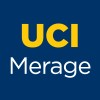Telerehabilitation in the Home Versus Therapy In-Clinic for Patients With Stroke
Stroke

About this trial
This is an interventional treatment trial for Stroke
Eligibility Criteria
Inclusion criteria
- Age ≥18 years at the time of randomization
- Stroke that is radiologically verified, due to ischemia or to intracerebral hemorrhage, and with time of stroke onset 4-36 weeks prior to randomization
- Arm motor FM score of 22-56 (out of 66) at both the Screening Visit and Baseline Visit
- Box & Block Test score with affected arm is at least 3 blocks in 60 seconds at the Screening Visit
- Informed consent signed by the subject
- Behavioral contract signed by the subject
Exclusion criteria
- A major, active, coexistent neurological or psychiatric disease, including alcoholism or dementia
- A diagnosis (apart from the index stroke) that substantially affects paretic arm function
- A major medical disorder that substantially reduces the likelihood that a subject will be able to comply with all study procedures
- Severe depression, defined as GDS Score >10
- Significant cognitive impairment, defined as Montreal Cognitive Assessment score < 22
- Deficits in communication that interfere with reasonable study participation
- A new symptomatic stroke has occurred since the index stroke that occurred 4-36 weeks prior to randomization
- Lacking visual acuity, with or without corrective lens, of 20/40 or better in at least one eye
- Life expectancy < 6 months
- Pregnant
- Receipt of Botox to arms, legs, or trunk in the preceding 6 months, or expectation that Botox will be administered to the arm, leg, or trunk prior to completion of the 30 Day Follow Up Visit
- Unable to successfully perform all 3 of the rehabilitation exercise test examples
- Unable or unwilling to perform study procedures/therapy, or expectation of non-compliance with study procedures/therapy
- Concurrent enrollment in another investigational study
- Non-English speaking, such that subject does not speak sufficient English to comply with study procedures
- Expectation that subject cannot participate in study visits
Expectation that subject will not have a single domicile address during the 6 weeks of therapy, within 25 miles of the central study site and with Verizon wireless reception.**
- A site may enroll a person who does not meet exclusion criterion # 17 if this is specifically approved by the site's study PI.
- Because Montreal Cognitive Assessment scores may be difficult to interpret for patients with aphasia, at the discretion of the site's study PI, exclusion criterion #5 ("MoCA score cannot be <22") can be waived.
Sites / Locations
- University of California, Irvine
- UCSD Stroke Center
- Brooks Rehabilitation Clinical Research Center
- Emory Rehabilitation Hospital
- Rehabilitation Institute of Chicago
- Spaulding Rehabilitation Hospital
- Kessler Institute for Rehabilitation
- Mount Sinai
- Burke Rehabilitation Hospital
- MetroHealth Rehabilitation Institute of Ohio
- MUSC Center for Rehabilitation Research in Neurological Conditions
- Harborview Medical Center
Arms of the Study
Arm 1
Arm 2
Experimental
Active Comparator
Telerehabilitation Therapy
In-Clinic Therapy
The Telerehabilitation arm of this study will deliver rehabilitation treatment sessions via an in-home internet-connected computer. A major component of the system is the use of games to promote therapeutically relevant movements. The subject will perform daily assigned home-based telerehabilitation games and exercises and 5 minutes of stroke education, all guided by the telerehabilitation system.During half of the sessions, therapists will initiate a videoconference with the subject's telerehabilitation system to discuss progress, issues, and revise treatment plans as needed.
The in-clinic arm of this study will deliver half of the rehabilitation treatment sessions at a study site providing traditional outpatient therapy, continuously supervised by a licensed therapist. The unsupervised therapy sessions will take place in the patient's home, and will be guided by an individualized booklet generated and printed by the Treatment Therapist and distributed to the subject during the first in-clinic therapy visit. The content of the unsupervised therapy sessions will be matched to the same exercise and training components provided during the subject's in-clinic supervised therapy sessions. In addition, at the start of each of the unsupervised sessions, all subjects will receive 5 minutes of stroke education.
Outcomes
Primary Outcome Measures
Secondary Outcome Measures
Full Information
1. Study Identification
2. Study Status
3. Sponsor/Collaborators
4. Oversight
5. Study Description
6. Conditions and Keywords
7. Study Design
8. Arms, Groups, and Interventions
10. Eligibility
12. IPD Sharing Statement
Learn more about this trial
